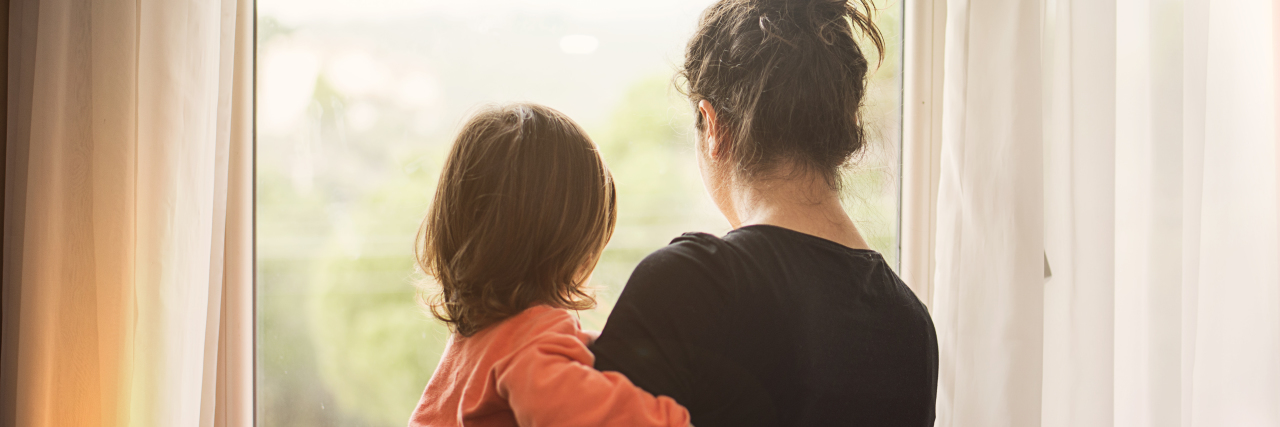5 Self-Care Tips I Turn to When Someone With My Daughter's Heart Condition Dies
My heart breaks every time I hear about yet another death of someone with the same heart defect as my daughter. My stomach drops and I can’t read any more posts. My thoughts immediately go to, “What if that was my child?” It happens repeatedly.
Raising a child with significant, life-threatening heart defects is not easy. I have received a ton of support from the various support communities and I will forever be thankful. It triggers a stress-response in me every time I hear about another death. Living with constant stress and anxiety is very lonely. The reality is that people are dying of heart disease similar to my child’s diagnosis and I cannot fall apart every time.
I have learned many tools that help immensely. Here’s what I do:
1. Breathe.
First of all, I breathe using some of the basic breathing techniques such as six-count belly breathing and alternate-nostril breathing I learned while taking yoga teacher training.
Here are two examples of breathing exercises to calm and center
your mind:
Six-Count Belly Breaths
This practice slows down your heart rate and calms your nervous system. Put one hand on your stomach and the other on your diaphragm. Picture your torso as a glass. Breathe in and out through your nose. When you breathe in, you are going to fill that glass from the bottom to the top, from your stomach up to your shoulders. As you breathe out, you are going to empty the glass slowly from your shoulders down. I do this to a six-count, but you can do what works for you as long as it is a deep breath for you. Do this for five minutes.
Alternate-Nostril Breathing
This practice balances the left and right sides of the brain. Use a four to six-count on each inhale and exhale. Use the thumb of the right hand to close the right nostril and inhale through the left side. Then, use the index finger of the right hand to close the left nostril, exhale through the right. Next, inhale right and exhale left. Continue for 10 rounds. You are exhaling and inhaling on one side and then moving to the other side to exhale and inhale.
2. Talk to someone.
Reach out. Find someone who gets you; someone who can help. I
finally found a therapist that could help me unpack my childhood trauma to see how it affected raising my daughter. We all need something different. Here are some other suggestions of who you could talk to:
- Another parent of a child with the same diagnosis
- Facebook and other online groups
- Advocacy groups
- Longtime friend
- Family member and more
3. Radical acceptance.
Initially, I have to accept the reality that another person has died of the same heart defect as my child. In Dialectical Behavior Therapy (DBT), they call this Radical Acceptance. It’s not an easy concept, but it can help you move on from terrible news. It does not mean that you approve of what has happened, but you stop fighting the effects of the bad news.
Here are some ways to practice Radical Acceptance:
- Notice that you are fighting reality
- Turn your mind to acceptance
- Use your body to help you
- Act as if (you accept this reality)
4. Morning yoga practice.
Most mornings, I do some breath work, movement and/or meditation as part of my morning practice called Sadhana. It helps calm my mind at the start of my day. Now I am at the point most days I wake up without my negative internal dialog.
5. Take a break from social media.
While I am a firm believer that social media can be a source of support for medical parents, sometimes taking a break from it is important as well. It can be overwhelming to hear others’ anguish over their child’s illness when you’re in your own crisis (or not). I have taken “social media” breaks over the years when I’ve needed it and come back when I am ready.
When something triggers my anxiety like finding out about another person who has died of the same heart defect my child has, I feel it fully. What is different now is that I recognize immediately what is happening and I use the self-care techniques I described above.
What do you do for self-care? Tell us in the comments.
Photo credit: Kaan Sezer/Getty Images

